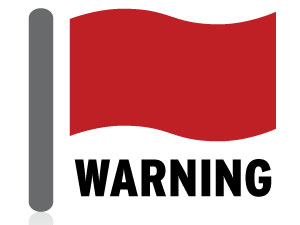As Vision Therapists, we receive training in a vast array of topics from oculomotor activities, the relationship between accommodation and vergence, and most visual perceptual areas. In fact, therapists who complete a certification (COVT) are tested in these very areas and plus several more. The benefits to more training are fairly obvious, although one understated and often overlooked benefit is the therapist who both understands their knowledge base, as well as its limits. If there’s one thing I’ve learned about my profession, it’s no amount of knowledge is enough knowledge. There will always be patients who challenge us, who ask questions or experience symptoms far beyond anything we’ve learned or experienced, and who leave us scratching our heads as we look to make sense of their signs and symptoms. The good news is, we all work under the tutelage of a Developmental Optometrist and always have their expertise to fall back upon.
Another aspect of training most Vision Therapists undergo is understanding the red flags, or trouble areas, a patient may report. These are aspects of vision which do not fall under the “normal” reporting in a Vision Therapy room, and in most cases, require immediate intervention from a doctor.We were presented with such a patient today; a young lady in her early teens who has been a patient in our VT program only a few weeks. She emailed our office earlier in the day to report some “weird symptoms” and requested her therapist, Daniel Wilson COVT, make time to discuss it. When she arrived and her session began, she reported her symptoms as “a blurry bubble in the center of her vision”, and “ghosting and doubling” in her right eye. After a few more questions, Daniel called me over to hear the patients concerns.
As an aside, although within the structure of our office my position in the hierarchy is above Daniel’s, we often will bounce ideas off one another and ask advice on a patient’s concerns to be sure we have considered everything. I have full faith in Daniel’s training and abilities, as he does in mine, and often times our collaborative thoughts are the key to a patient’s success. I’ve learned if you work side by side with another therapist, it’s always a good idea to ask their opinion, no matter their level of training. Sometimes the simplest of things being overlooked makes the day so much more difficult, and a fresh set of eyes and ears are just what the doctor ordered. Daniel are I both subscribe to this manner of practice, we both benefit from it, and our doctor is in full support of it.
After talking to Daniel’s patient for a few minutes, she shared these new symptoms began a few days ago and seem to have progressively, although slowly, become worse. Even at her young age, this young lady has a fairly lengthy and complex medical history which may have been contributing to her symptoms, but neither Daniel or I felt comfortable making that determination. We ran her through a few short and simple monocular exercises, trying to better understand what she saw, and if it could be caused by something we were overlooking. At the end of the conversation, which lasted all of 3 minutes we decided to contact our doctor by phone, who was seeing patients this afternoon in our satellite location. As you may have guessed, our doctor asked us to stop VT immediately and to send this patient to a primary care optometrist with whom we have an agreement to co-manage our eye emergency patients. Daniel made the call, and within a few minutes, this young lady and her father were on their way. Our doctor will be following up with both the patient and our eye-emergency doc in the morning.
Now, I’m not going to pretend I understand all the reasons a patient can experience monocular diplopia (seeing double in one eye) because I don’t, but I do know most of them are bad news. I also know enough to understand the difference between the “I’m not sure…but this might be happening…but maybe not…but I’m not really sure” description, as opposed to the “something is very different and I’m not sure it’s good” conversation. The young lady in question was definitely the latter and needed further investigation. Moments like those are when I recall with some fondness the millions of times someone has recited the words “when you don’t know, ask the doctor” in my direction. Alas, it may have sunk in!
Today was a good reminder of the importance of understanding the red flags in VT, and knowing how to manage them when they appear. If nothing else, have your doctor’s cell phone number on auto-dial. You never know when it may come in handy!
Cheers!



Leave a comment